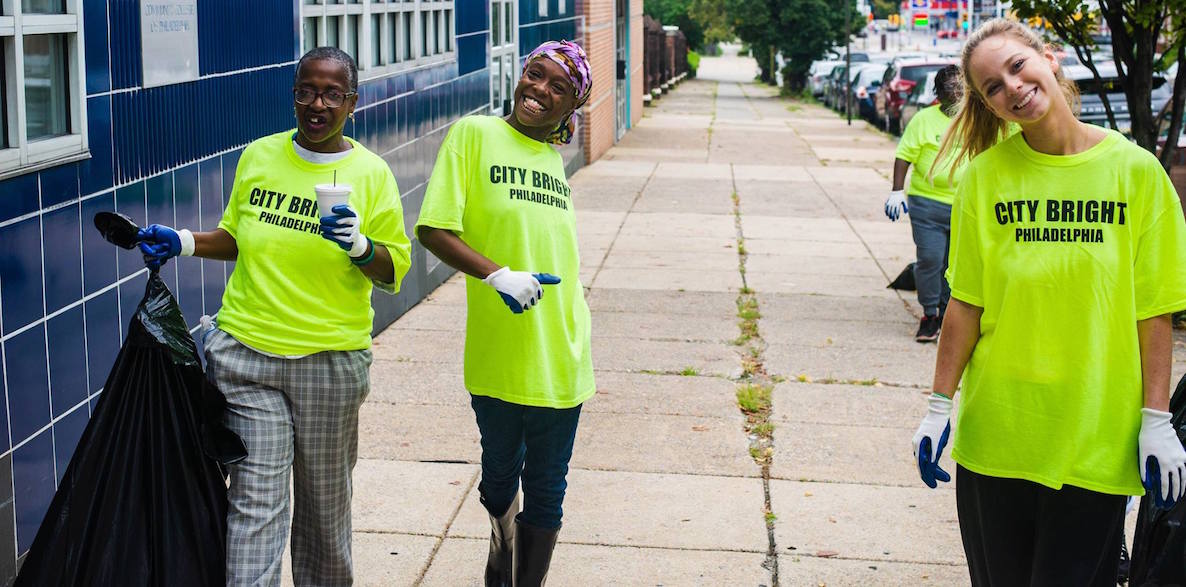By 5 p.m Monday—the day before the rest of the country went to the polls—57.6 percent of registered voters in Oregon had already voted in the 2018 midterm elections. That was on track to make turnout in Oregon the highest in 25 years, even higher than in 2014, when a spectacular (by our standards) 71 percent of eligible voters cast a ballot.
Compare that to what we saw in Pennsylvania in 2014: 42 percent. Or even what we saw in yesterday’s hyped election: Around 54 percent.

Prefer the audio version of this story? Listen to this article on CitizenCast below:

This is not just because Oregonians are culturally more inclined to vote than we are here in America’s birthplace. (Though they are.) It is also because in Oregon, voting is easy, and has been for a long time.
Twenty years ago, Oregon became the first state in the country to conduct all of its voting by mail. Three weeks before Election Day, the state mails ballots to registered voters, who either mail them back by the first Tuesday in November, or drop them in ballot boxes throughout the state. Washington and Colorado have followed suit; a handful of others allow counties to conduct polling either by mail or in person. In the 2016 election, states that allowed mail-in ballots saw on average 10 percent more voting than in other states.
In the first 10 months after it was enacted in 2016, more than 225,000 new voters in Oregon were added to the election rolls, nearly 100,000 of whom voted that November—a rate of over 43 percent.
Oregon was among the early adopters of online registration—which Pennsylvania finally launched in 2015—with a system that automatically updates a voter’s address when they move. It allows 16 and 17-year-olds to pre-register so they are ready to cast their first votes when they turn 18—something research has shown will tilt them towards a lifetime of voting.
![]()
And three years ago, Oregon became the first state to automatically register citizens to vote using information from its Department of Motor Vehicles—something that politicians on both sides of the aisle supported there. Now, instead of actively deciding to fill out a registration form—which means knowing to do it, remembering by the deadline, changing an address if they move—Oregonians are sent a letter that gives them the the choice to opt-out of being on the voter rolls if they want. The system, in addition to being a common sense approach to growing voters, is also less expensive and less cumbersome to administer, as it doesn’t require last minute additions and changes to voter rolls that can overwhelm election offices.
“It works in a lot of ways like a 401k or organ donation program” says Jonathan Brater, Counsel at the Brennan Center for Justice’s Democracy Program at New York University. “When you flip to presumption, you help people do something they would want to do anyway. Some people opt out. But most people don’t.”
In the first 10 months after it was enacted in 2016, more than 225,000 new voters in Oregon were added to the election rolls, nearly 100,000 of whom voted that November—a rate of over 43 percent. That helped propel Oregon to a 78 percent turnout in 2016—despite not having any competitive statewide races. In Pennsylvania, where we had a close senatorial race to decide, turnout was at 70 percent. (Nationally, it was 57 percent.) Since then, 13 other states and Washington, D.C., have passed automatic registration laws, most too recently to have associated turnout data, and 20 others have introduced them.
According to a report last July on ways to increase voter participation, the three states with highest voter turnout in 2014 all allow citizens to register at the same time as they vote—Maine, Wisconsin and Colorado.
It’s a simple solution for a simple problem. Rather than spend time, energy and money on registration drives, why not put all that effort into educating voters, and getting them to actually vote? The presumption of voting is the norm in other democratic countries, where they also often make election days into holidays, or over several days. “The idea of having to do a separate transaction to register is unusual in democracies in general,” Brater notes.
![]()
Oregon, with mail in voting, has no real need for another election reform that has proven nationwide to boost turnout: Same day registration, currently allowed by 16 states and Washington, D.C. According to a report by the Center for American Progress last July on ways to increase voter participation, the three states with highest voter turnout in 2014 all allow citizens to register at the same time as they vote—Maine, Wisconsin and Colorado. (Minnesota has led us all in presidential voting for 20 years; it, too, has same day registration.) The report cites estimates that nationally, same day registration could increase voting among 18 to 25 year olds by 12 percent, and that in Pennsylvania, an additional 292,000 people might cast a ballot.
That is nothing to scoff at.
Unlike Oregon, Brater notes that some of the states that have enacted reforms, like automatic voter registration, are ones—like Pennsylvania—that have not always been considered especially voter-friendly, including California and Illinois. In other words, it’s not about a culture of voting like they have in Oregon. It’s about deciding that voting is important enough to ensure citizens can easily vote.
It’s a simple solution for a simple problem. Rather than spend time, energy and money on registration drives, why not put all that effort into educating voters, and getting them to actually vote?
This is not a new idea in Pennsylvania. In 2015, eight Democratic state senators—including Philadelphia’s Vincent Hughes, Larry Farnese and Anthony Williams—first introduced the idea of automatic voter registration in the state. It went nowhere. Sen. Hughes and Rep. Ed Gainey from Allegheny County re-introduced the bills to their chambers in 2017. Those bills were part of a package of proposed legislation that would make it easier for Pennsylvanians to vote that included same day registration; no-excuses absentee ballots; and—like in Oregon—vote by mail. (These ideas are also part of Gov Wolf’s “21st century voting reform plan” announced in March.)
None have even come up for a hearing in their respective State Government committees, which are run by Republicans. (In the House, the committee chair is Republican Rep. Daryl Metcalfe, who boasted this year that he never lets Democrat-sponsored bills come up for a vote.)
![]()
Hughes spokesman Wesley Robinson says the legislators will again introduce the package of bills in 2019, which could put the reforms in place by 2020’s Presidential elections. But let’s not hold our breath. As the state’s long history with gerrymandering makes clear, voting reform does not come easy in Pennsylvania. All these reforms require politicians who are in favor of widespread and easy voting. That that is not a given is a sad commentary on our political times.
Voting reforms wouldn’t change everything in Pennsylvania, or in Philadelphia; apathy is a hard thing to fight, and the state of our politics makes it too easy to shut down and turn away. But if this election proved anything, it’s that we are ready to get involved in numbers not seen for a long time. There is no better time to capture that energy now—and no better time to make the easiest entry into civic engagement even easier.
At the time Oregon passed its automatic voter registration bill, Gov. Kate Brown—a former secretary of state in charge of elections—told the Los Angeles Times of an exchange that sums up the issue pretty well. “During testimony on the bill, a legislator said to me, ‘It’s already so easy to register in Oregon, why would we make it easier?’” she said, before asking a question of her own. “Why wouldn’t we?”
Why indeed?
Photo via Flickr






